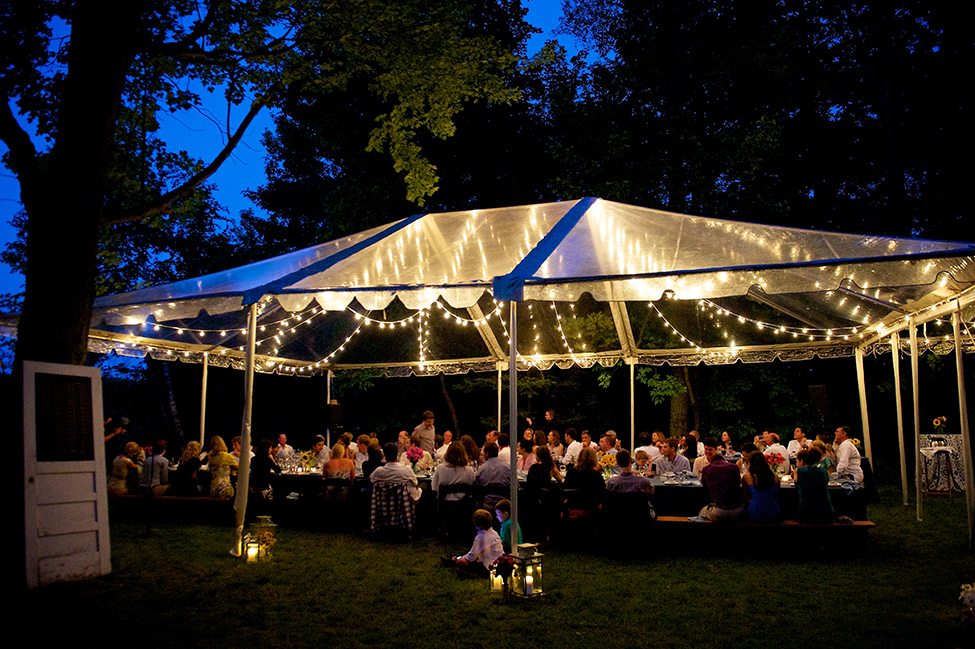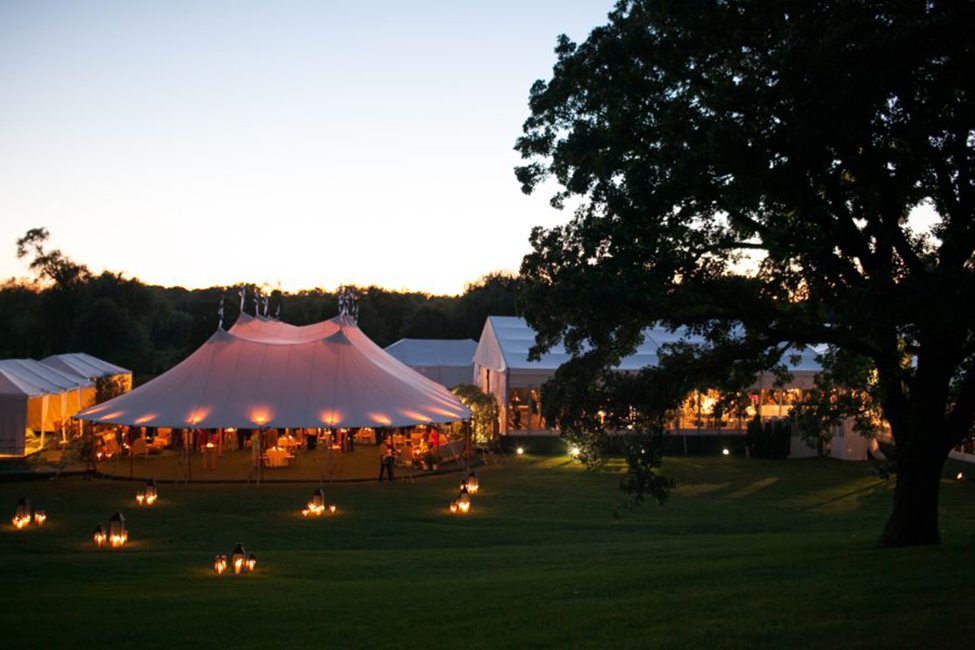All Tents are Not Created Equal
One tent, two tents, red tent, blue tent. Chances are, if you’ve spent some time perusing the internet or any type of social media looking at weddings and special events, you’ve noticed the varying types of tents and infrastructure. While it may be difficult to put your finger on what makes each type of tent different, we are here to break things down for you.
Image by Jose Villa, Event Design by Easton Events
Clear span Tents
‘Clearspan tents by definition indicate that they clearly span a space, meaning no interior poles or obstructions. This means there are no obstacles to plan around and no site-line issues, which are common headaches when designing an event under a traditional pole tent.’ They are erected in “bays” and then the canvas is stretched overtop. Because of the way they are constructed, clear spans can be placed overtop existing items including landscaping, trees, restroom trailers, etc. There are no straps extending off the sides of a clear span tent as the stakes go straight down into the ground from the base of the uprights. Clear spans are also known to endure the highest wind speeds and strongest gusts. Lastly, even though the phrase clear is used to describe a clear span tent, the roof, gable ends and sidewalls of a clear span can be either solid white or clear pending the design. For more in’s and out’s on this type of tent, there’s a great run down you can read here.
Image by Kate Krueger Photography, tent by Special Events Party Rental, design by A Day in May Events
Frame Tents
Frame tents are constructed with the shelter, or metal support system, first and the canvas is stretched and secured over top with the body of the tent erected. Frame tents are often used in conjunction with clear span tents and often serve as connecting or auxiliary structures to the main tent. Frame tents also have no center poles and there are different canvas applications- clear or solid. Frame and Clear span tents are both “structure” tents. They have ample attachment points off their truss or rafters to suspend fixtures or attach speakers.
Image by Jen Kroll Photography, Event Design by A Day in May Events
Pole Tents
Pole tents are the type of tent that most people seem to be familiar with. A pole tent has a dramatically tall, peaked roof which is held up by center poles. Around the perimeter of the tent at each tent leg, straps and stakes extend outward to keep the tent in place (similar to the frame tent). For some, the undulating peaks of the pole tent tend to be more pleasing to the eye and more “wedding like” versus the more structural clear span or frame tent. While pole tents can withstand mild breezes, they are not recommended for areas that are prone to heavy wind gusts as they are not as structurally sound as clear span or frame tents.
Image by Jen Kroll Photography, Event Design by A Day in May Events
Specialty Tent- Sailcloth Tent
Throughout the past few years, the sailcloth tent has become widely popular and is more prominently seen on various social media outlets and wedding inspiration guides. Similar in shape the the pole tent, the sailcloth tent’s peak roof is supported by center poles with tent legs, straps and stakes supporting the structure from the perimeter. Their are a couple unique features that set the sailcloth tent apart. The no valance design along with the translucency of the sailcloth fabric roof creates an open and airy feeling with a nautical flair. The whimsical flags that adorn the top of the peaks further add to the character of the structure. Lastly, with the center poles and perimeter legs typically being a finished, warm wood, the structure remains the perfect fit for a coastal soiree or woodland fete.
Image by Liz Banfield Photography, Event Planning by Bliss Weddings and Events





